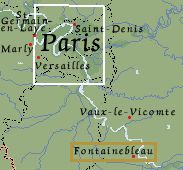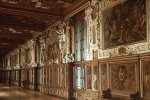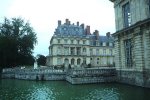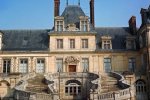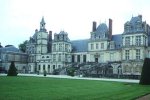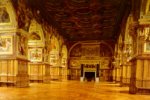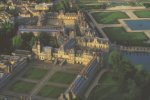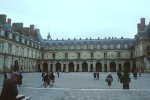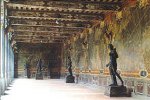One of the most common and yet most contestable pieces of conventional wisdom is that the greatness of france is uniquely expressed in logic and clarity. To refute this, we need only evoke the palace of Fontainebleau. The beauty of this royal château and its extraordinary art collection, constantly associated with the Louvre and Versailles, is not derived from precision and harmony, but rather from the delightful surprises of incongruity.
We search in vain for the majesty imposed by a grand
architectural design. The accidents of history and the whims of the
various sovereigns caused the dissimilar buildings to multiply without
any guiding geometry or logic. When we approach the château today.
two long wings connected by a crop de logis with an impressive central staircase
seem to announce an architectural organization of the most traditional order.
However, this is only an illusion achieved following the original construction
of the château by the replacement of the Francis I wing by an
iron grillwork. The staircase, the famous "horseshoe", does not lead
to an symmetrically organized structure, but rather to a perpendicular central
building which presents on each side two architectural units so complete,
that each could easily be taken for an independent château. The staircase
leads to another courtyard, an oval formed by irregular buildings, itself
surrounded by other courtyards, each of which seems to belong to a different
edifice and which lead the eye towards diverse horizons, lake, park, lawns...
It takes a few moments to recognize this oval courtyard as the remnants of
a fortified medieval castle. |
